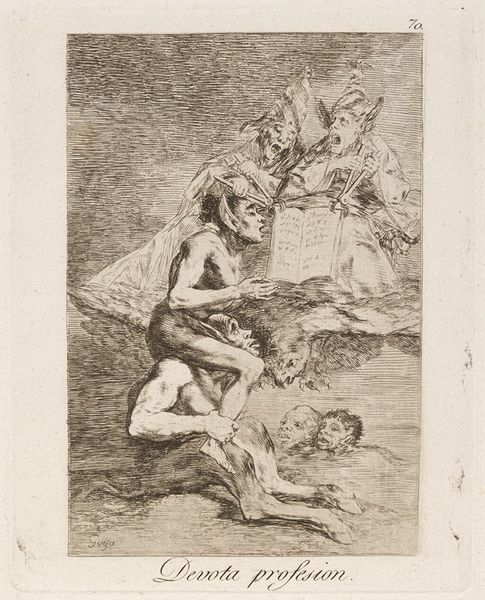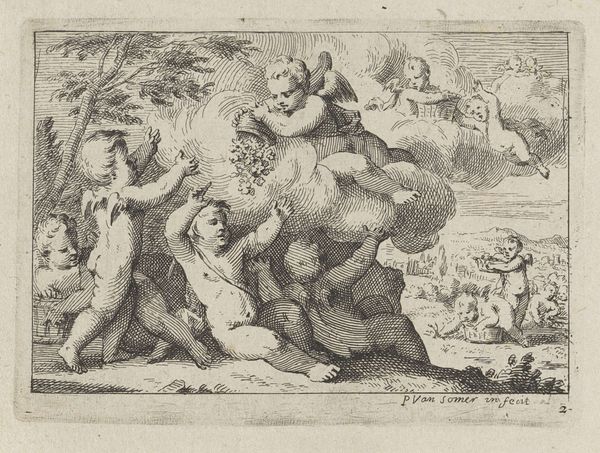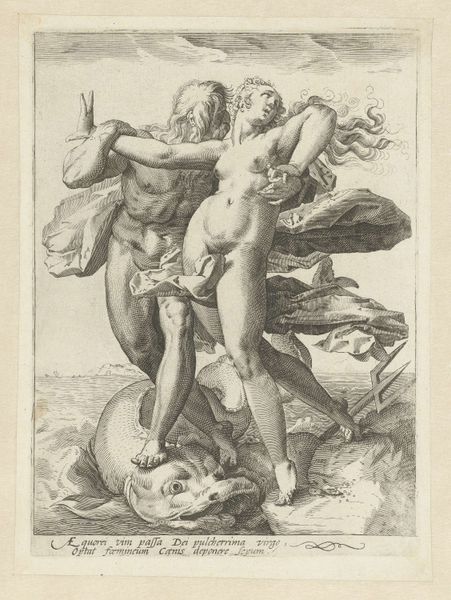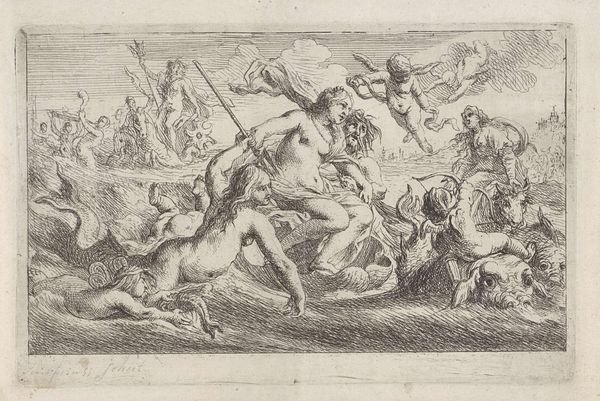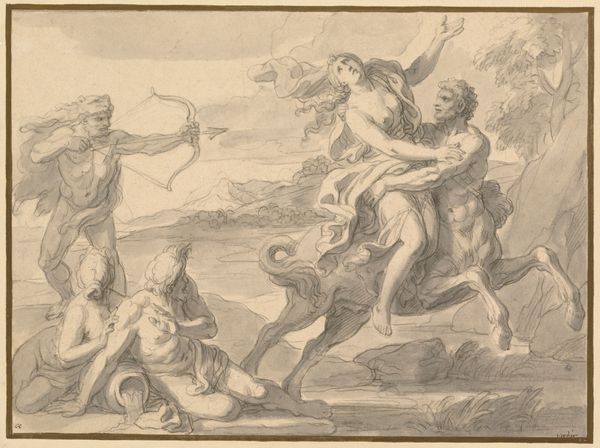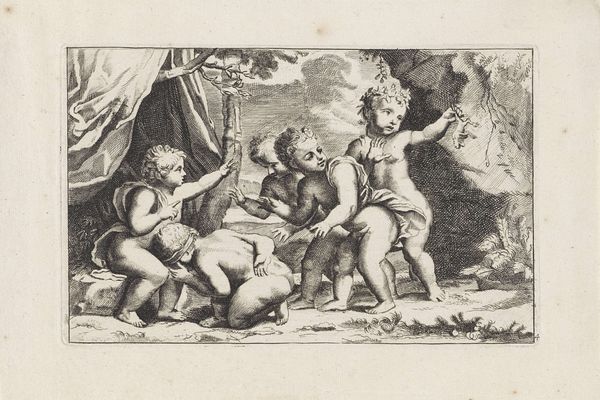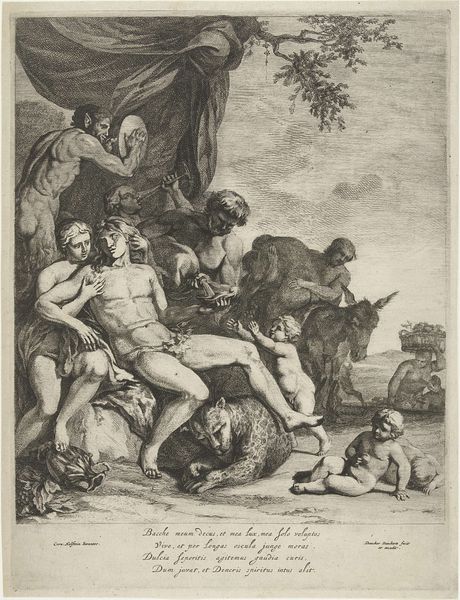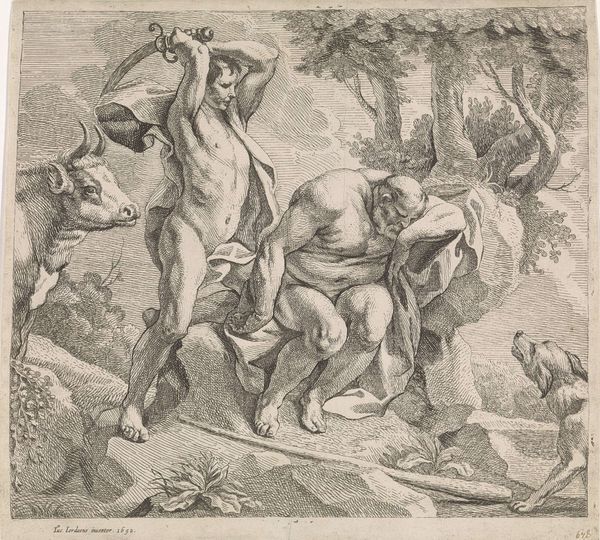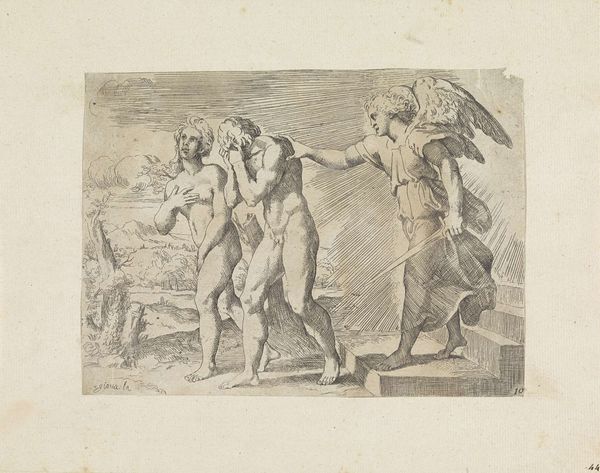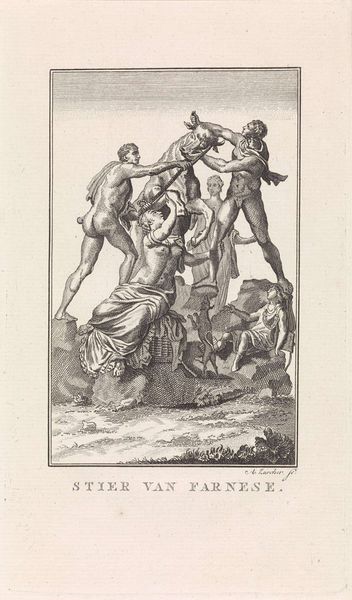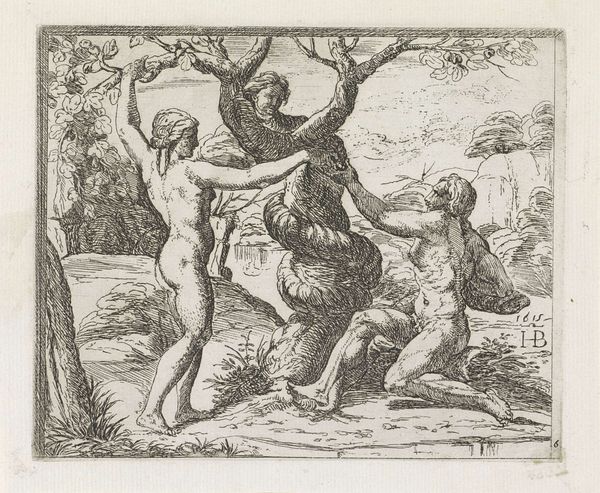
print, etching
#
narrative-art
# print
#
etching
#
caricature
#
old engraving style
#
figuration
#
personal sketchbook
#
romanticism
#
sketchbook drawing
#
sketchbook art
Copyright: Public Domain: Artvee
Francisco de Goya created the etching "Donde vá mamá" to address the social issues of his time. The central motif is a group of grotesque figures supporting an obese woman. The parasol-wielding cat in the background is an ironic status symbol, mocking the elite. This motif of the 'world carried on one's shoulders' echoes through art history, from ancient Greek Atlas sculptures to medieval depictions of vices. Consider the recurring image of monstrous figures bearing burdens; we see it even in Hieronymus Bosch's nightmarish visions. The cat, often a symbol of duplicity, here underscores the moral decay. Throughout time, the cat has morphed in symbolism, from ancient Egyptian reverence to its darker associations in folklore, reflecting the shifting cultural anxieties. The emotional weight of Goya's imagery evokes a deep-seated societal unease, revealing a collective subconscious grappling with corruption. Like a recurring dream, this imagery resurfaces throughout history, each time revealing the non-linear, cyclical nature of human folly.
Comments
No comments
Be the first to comment and join the conversation on the ultimate creative platform.
